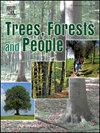Modeling within-territory habitat selection by Lilfordi Woodpecker Dendrocopos leucotos lilfordii from GPS tracking: Implications for conservation and forest management
IF 2.7
Q1 FORESTRY
引用次数: 0
Abstract
The Lilfordi Woodpecker (Dendrocopos leucotos lilfordii), a subspecies of the White-Backed Woodpecker, is considered one of the rarest and most endangered woodpeckers in Europe. Understanding the habitat requirements of the Lilfordi Woodpecker is crucial to making the management of forests compatible with its conservation. While many studies have identified some habitat features that the White-Backed Woodpecker preferentially uses, it remains unclear whether the Lilfordi Woodpecker subspecies behaves the same way. We conducted a comparative analysis of presence/absence plots, delineated by GPS tracking data from a previous study, in 10 % of the territories found in the Western Pyrenees (Spain). Our results corroborate the primary role of deadwood (snags and logs) variables in determining the presence of the Lilfordi Woodpecker. However, we found that the subspecies could select less mature forest stands than previously assumed (and observed for the nominal species). Furthermore, provided that, at least, 4 snags (DBH > 20 cm) and 17m3 of logs per hectare are available, beech forests can be suitable for the Lilfordi Woodpecker. Importantly, our findings are easy to transfer to management, thus establishing the guidelines to regulate forestry exploitation to promote the species’ conservation.
基于GPS跟踪的利尔福迪啄木鸟栖息地选择建模:对保护和森林管理的启示
利尔福德啄木鸟(学名:Dendrocopos leucotos lilfordii)是白背啄木鸟的一个亚种,被认为是欧洲最稀有和最濒危的啄木鸟之一。了解利尔福德啄木鸟的栖息地需求对于使森林管理与其保护相协调至关重要。虽然许多研究已经确定了白背啄木鸟优先使用的一些栖息地特征,但仍不清楚利尔福德啄木鸟亚种是否也有同样的行为。我们在西比利牛斯山脉(西班牙)10%的领土上进行了存在/不存在地块的比较分析,这些地块由先前研究中的GPS跟踪数据划定。我们的结果证实了枯木(树枝和原木)变量在确定Lilfordi啄木鸟存在方面的主要作用。然而,我们发现亚种对成熟林分的选择比之前假设的要少(在名义种中观察到)。此外,假设至少有4个障碍(DBH >;20厘米)和17立方米的原木每公顷可用,山毛榉森林可以适合利尔福德啄木鸟。重要的是,我们的发现很容易转移到管理中,从而建立规范林业开发的指导方针,以促进物种的保护。
本文章由计算机程序翻译,如有差异,请以英文原文为准。
求助全文
约1分钟内获得全文
求助全文
来源期刊

Trees, Forests and People
Economics, Econometrics and Finance-Economics, Econometrics and Finance (miscellaneous)
CiteScore
4.30
自引率
7.40%
发文量
172
审稿时长
56 days
 求助内容:
求助内容: 应助结果提醒方式:
应助结果提醒方式:


